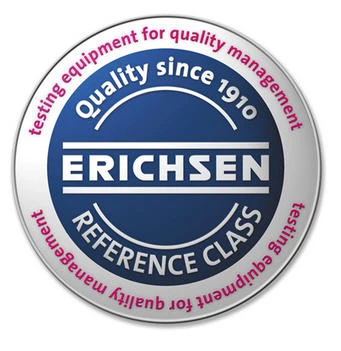Scratch Hardness Tester acc. to Wolff-Wilborn Model 291
Pencil Method technically equialent to Wolff-Wilborn
Purpose and Application
The pencil method belongs to the group of scratch hardness testing instruments.
This is a simple and quick method for testing the surface hardness of coatings with regard to stresses inflicted by scratching with sharp edges, or other rough surfaces. It can also be applied during production, e. g. for coil coatings.
Test Principle
Pencils of various grades of hardness are moved over the painted surface at an angle of 45° to the horizontal with a force of 7.5 ± 0.1 N.
The pencil hardness is defined by those two grades of hardness the softer one of which just produces a writing trace while the next harder one leaves a perceptible scratch on the coating.
Design and Function
The Scratch Hardness Tester, Model 291, enables the test to be carried out technically equivalent to Wolff-Wilborn and ensures that the specified force and angle remain constant throughout the test.
Guidance of the instrument is easy and excludes manual influences of the pencil pressure.
An assortiment of pencils with 17 degrees of hardness from 6 B to 9 H serve for the test.
Test Procedure
The pencil points are sharpened so that the graphite point protrudes about 5 mm. For this purpose use the special sharpener which is included in the scope of supply.
The graphite point is face-ground sharp-edged on emery paper with a grain size of 400 for which the pencil is held vertically.
The pencil is clamped into the holder block so that the pencil point protrudes about 5 mm.
The instrument is now placed on the test specimen.
The hubs of the wheels are held with the thumb and forefinger and the instrument is moved over the specimen in the direction the pencil point shows at a speed of about 10 cm/s.
The appropriate pencil hardness has to be established empirically.
It is recommended to start testing with a medium soft pencil or medium hard one and to narrow down to the most suitable pencil type.
During the test it is necessary to be careful not to mix up the writing of the pencil with penetration into the film. Should it be necessary, a moist sponge or a soft pencil eraser can be used to remove excess marking.
The numbers of the two pencil types defined are indicated as pencil hardness. A pencil hardness of 2 H...3 H for example means that pencil type 2 H still writes on the surface while pencil type 3 H already slightly scratches the film.
Highly pigmented paint or that containing flake-shaped pigments are not recommended for use with this test method.
Reference Class:
The Model 291 is supplied with a Manufacturer’s Certificate M in accordance with DIN 55 350-18 that includes among others the following information:
- Actual and setting value of the loading weight (test load),
- product identification,
- test equipments used with calibration status,
- date,
- name of inspector.
The loading weight of the test instrument is adjusted to a value in the range from 755 g to 760 g – corresponding to a test load of (7.55 ± 0.05)N.
Order Information
Order No. Description
101-0038.01.31 Scratch Hardness Tester acc. to Wolff-Wilborn, Model 291 incl.
- 17 standardised pencils
- 1 special sharpener,
- 1 sheet of emery paper
Spare Parts
101-91 0919141 1 Set of standardised pencils (17 off)

